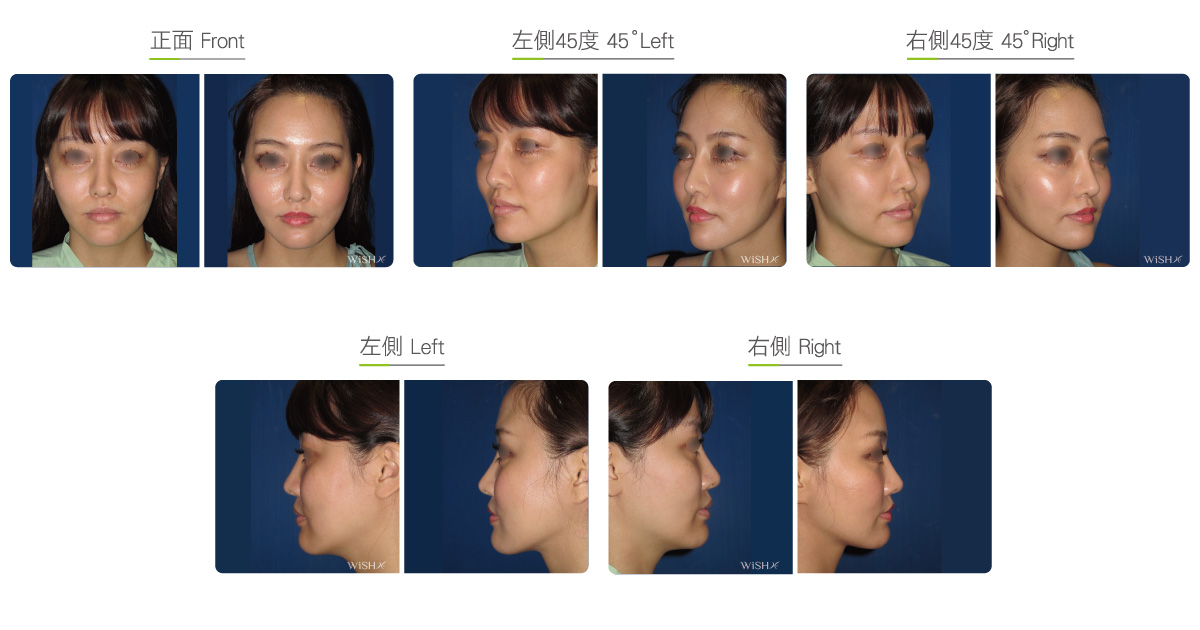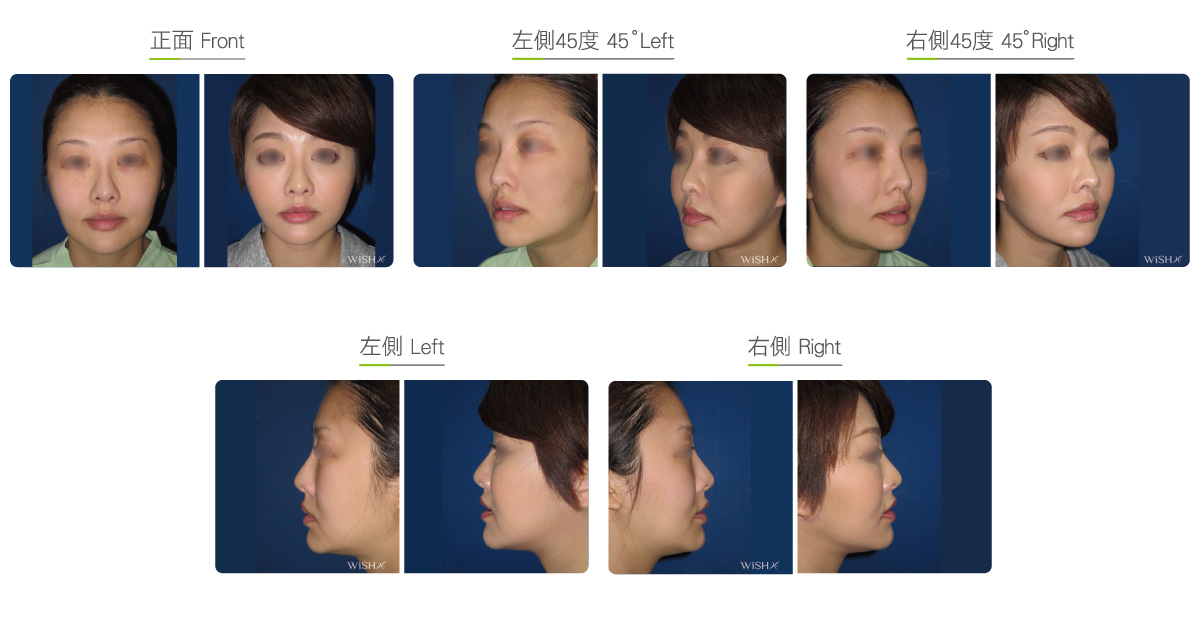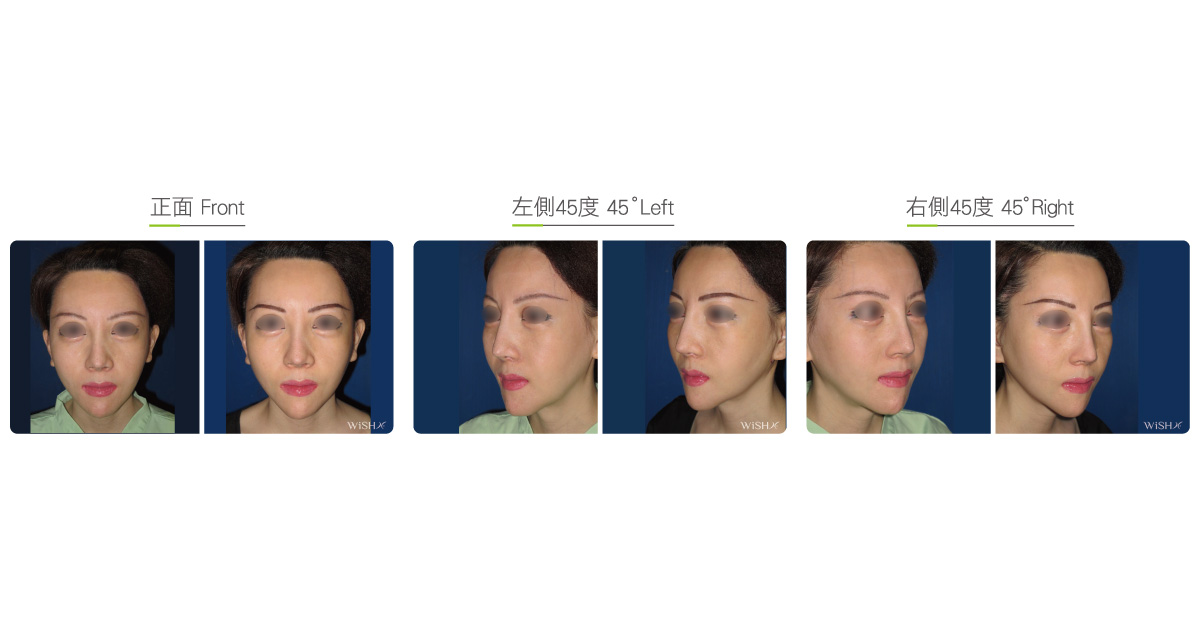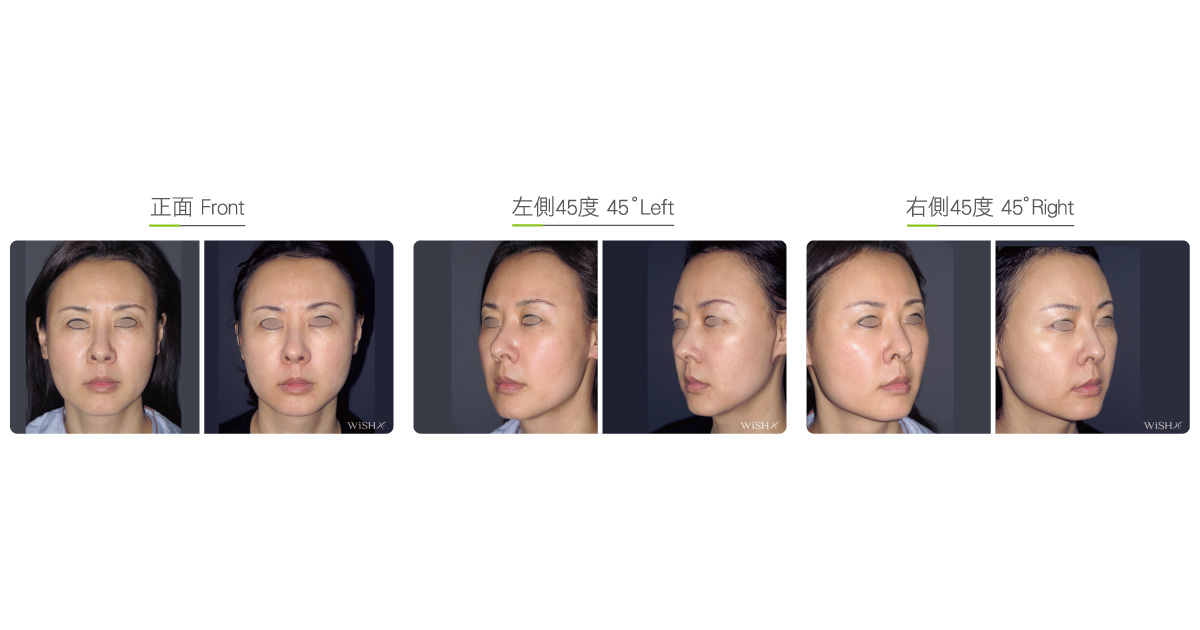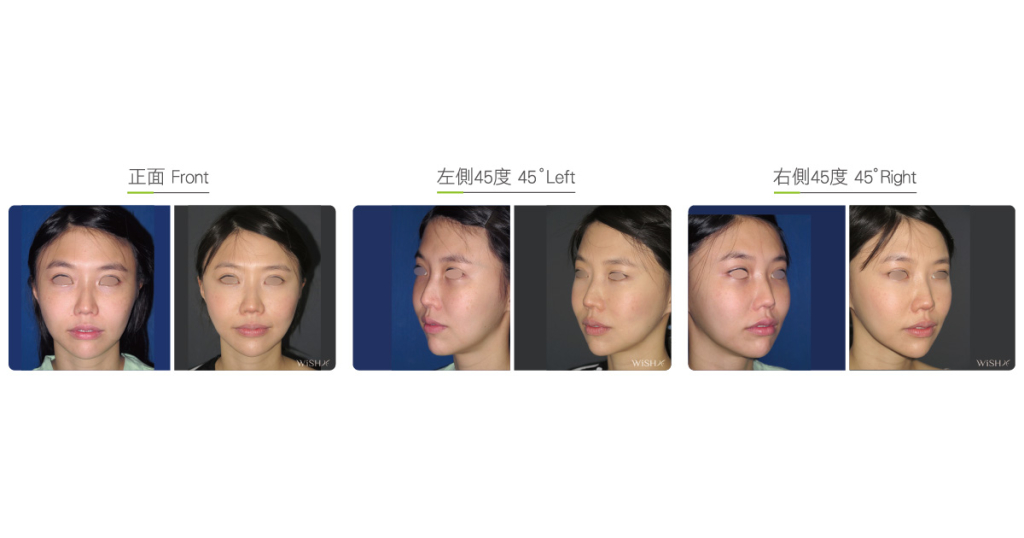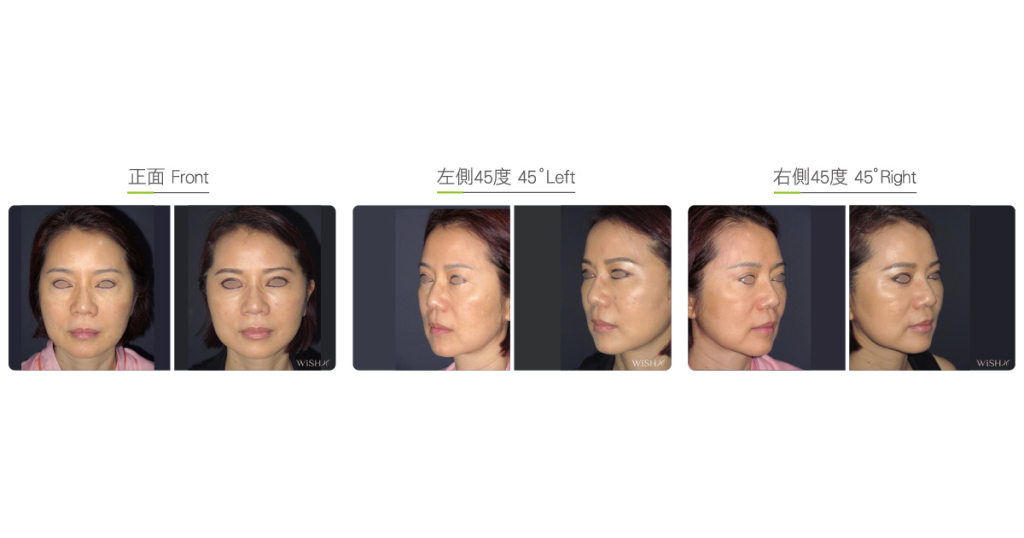Jawline Suspension Lift
This surgery is a mini facelift, similar to MACS lift in procedure but with the surgical area relatively confined to the low face between the preauricular area and chin. Its aim is to enhance tightening of the jawline and partially improve double chin problems. As for the procedures, Dr. Chuang first makes a short S-shaped incision from the anterior border of the earlobe to behind the ear, enters the skin’s superficial fascia, and performs subcutaneous dissection along the jawline to the corner of the mouth. If patients have concurrent chin hypertrophy requiring liposuction, liposuction can be performed through the same incision. After the limited dissection of the skin and underlying superficial fascia near the earlobe, the distal (proximal to the chin) fascia should be suspended to the proximal preauricular deep fascia for fixation and suture. This way, the peripheral skin of the chin and circumoral fat will become tight to effectively sculpt the jawline and sharpen the contour of the lower face.
This surgery boasts a small operating field and minimal invasiveness as well as rapid postoperative recovery. It is indicated for patients with congenital jawline hypertrophy, jawline laxity due to cheek collagen loss, or young patients with premature lower face aging. It may also effectively improve or prevent potential jaw skin laxity as a result of mandible reduction. This surgery has numerous indications and is appropriate for young people in particular. However, its drawback is that the surgical results are poor for patients with bulging cheek fat or severe lower face laxity due to aging. The duration of the result varies from person to person, averaging approximately 3–5 years. The S-shaped scar anterior and posterior to the earlobe gradually fades away within 6 months so that there is no obviously visible scar later.
Surgical conditions
Duration
- Type of anesthesia: IV sedation + local anesthesia
- Type of incision: An incision of approximately 3–5 cm from the anterior earlobe to the rear skin
- Recovery: 3–5 days
- Removal of sutures: 7–10 days
General instructions
No food and water on the day of surgery
Anticoagulants, if any, should be suspended for 1 week.
- Rubbing or pressing the incisions on the forehead and scalp should be avoided for 1 month postoperatively.
- Hair dying or perming should be avoided for 2 months postoperatively to prevent unwanted irritation or allergy.
- Scar care should be continued for 3 months postoperatively.
Ideal candidates
- Individuals with a relatively loose midface and jawline skin.
- Individuals with jawline laxity due to thin skin from fat or collagen loss.
- Individuals with mild to moderate circumoral fat or marionette wrinkles due to aging.
- Individuals with lower face laxity due to prior facial bone reduction.
- Individuals whose jawline has disappeared with concurrent double chin.
- Individuals who have already undergone a non-surgical or thread embedding lift without obvious effects.
Potential complications
- Scar hypertrophy
- Temporary facial skin stiffness or numbness
- Earlobe deformity
Surgical advantages
-
Surgical effects are instant, and prior sharp face contours are restored quickly.
-
The surgical area is limited, so there is no obvious postoperative swelling, but a quick recovery.
-
The result lasts longer than Quill lift or thread embedding lift (averaging 3–5 years).
-
No risk of facial nerve and vessel injuries.
-
Double chin can be improved in conjunction with liposuction.
Surgical drawbacks
-
Patients with skin hypertrophy or severe laxity may not achieve the expected results.
-
It is unable to radically resolve overall facial sagging, and the duration of the result may vary.
-
Surgical incisions may leave scars.
-
The shape of the earlobes may change.

